We recently took an opportunity to visit the Mayan Ruins, Mexico – Tulum, and Coba. I want to talk about some things we discovered on our trip and how our life’s journey has certain similarities.
Even though lots of people go to the ruins on their own, we thought it would be best to go on a guided tour since we had friends coming for a short while. Each participant paid $44 (USD), which included a buffet lunch.
Around 8:30 in the morning, we arrived in Puerto Morelos (which is situated between Cancun and Playa Del Carmen) and met the driver and another guy. We had our backpacks filled with the recommended materials, including water, hats, sunscreen, bathing suits, and sturdy shoes. Of course, we already had our sunglasses on. The driver, a young woman named Kathy from Hungary, and our group of four people made up a total of six people. Everyone was in a joyful, carefree mood as the sun shone. Our vehicle was comfortable and air-conditioned, and our driver was friendly.
TULUM MAYAN RUINS
Our Arrival at the Mayan Ruins
We arrived at the starting point of our adventure around two hours later after making one stop along the route to take a bio break and buy some coffee and water. (My husband and I are standing near the entrance sign.) The entrance to the remains is just a 10-minute walk away; if that sounds exhausting, there is a tourist train accessible.
Before going to the ruins, this would also be the ideal opportunity to use the restrooms.
Location of the Mayan Ruins
Tulum (original name Zama which means ‘place of the drawing sun’) is a resort town on Mexico’s Caribbean, approximately 130 km south of Cancun and 65 km south of Playa del Carmen. Tulum is a term that means “wall.” The archaeological site of Tulum, located on 39-foot cliffs along the Yucatan Peninsula’s east coast, dates back to the thirteenth century. About 70 years after the Spanish began to rule Mexico, it continued to exist. The city was abandoned as a result of the diseases that the Spanish settlers brought.
Tulum is thought to have been a significant location for the worship of the Diving or Descending God. El Castillo, the Temple of the Frescoes, and the Temple of the Descending God are the three primary attractions.
El Castillo
El Castillo was constructed on top of another structure that had a colonnaded roof made of beams and mortar. The lintels of the upper rooms, which are structural horizontal blocks that cross the opening between two vertical supports, are decorated with serpentine designs. It has also gone by the name “lighthouse.”
El Castillo was built on another building that was colonnaded with a beam and mortar roof. Serpent motifs are carved into the lintels (structural horizontal blocks that span the space or opening between two vertical supports) of the upper rooms. It has also been called the lighthouse.
El Castillo may have been constructed in phases. It appears that a small shrine was utilized as a signal to direct approaching canoes. Tulum may have become a significant trading port as a result of this as well.
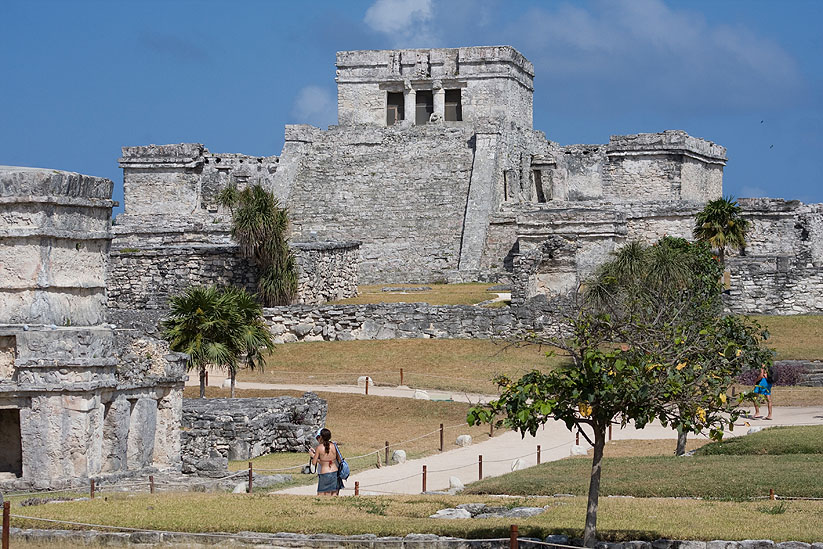
(PHOTO CREDIT: Sverzel – Own work, CC BY-SA 3.0, https://commons.wikimedia.org/w/index.php?curid=3993280)
The Temple of the Frescoes
The Temple of the Frescoes served as an observatory for tracking the sun and featured a lower gallery and a smaller second-story gallery. ‘Diving god’ or Venus deity sculptures are used to embellish the shrine. The “diving god,” which is still standing, is situated above the western wall’s entrance. On the eastern side of the room is a mural called Mixteca-Puebla, although admission is no longer permitted.
The Temple of the Descending God
A solitary room that has a door towards the west and a small stairway that was constructed on top of another temple to serve as its base make up the temple of the Descending God. A sculpture that can be found all across Tulum hangs above the door. It is clutching something and has wings and a headpiece. He is depicted as being turned around. This figure can also be discovered in Coba on a little temple atop the Grand Pyramid, in addition to Tulum. It is linked to Venus, which was once linked to conflict and strife.
One of the best-preserved Mayan ruins is in Tulum, which is a highly well-liked tourist destination. With more than 2.2 million tourists in 2017, they were the third-most visited archaeological site in Mexico after Teotihuacan and Chichen Itza.
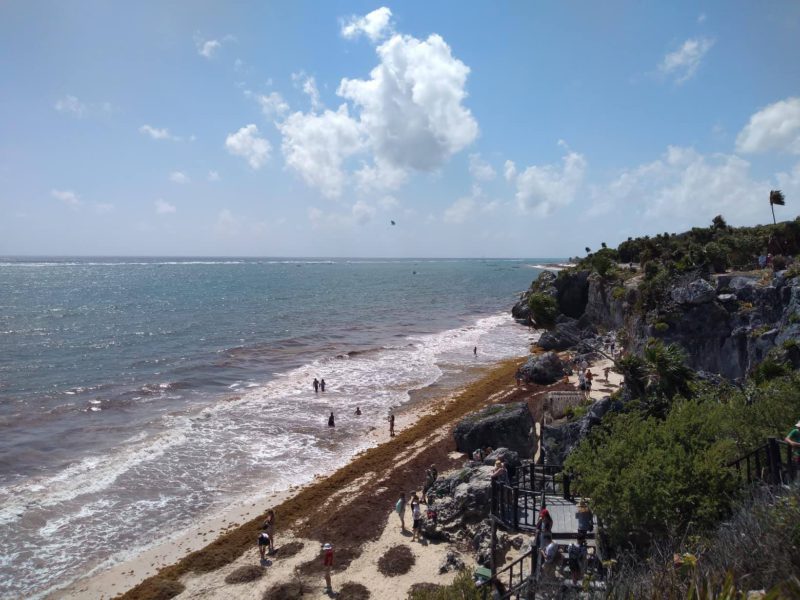
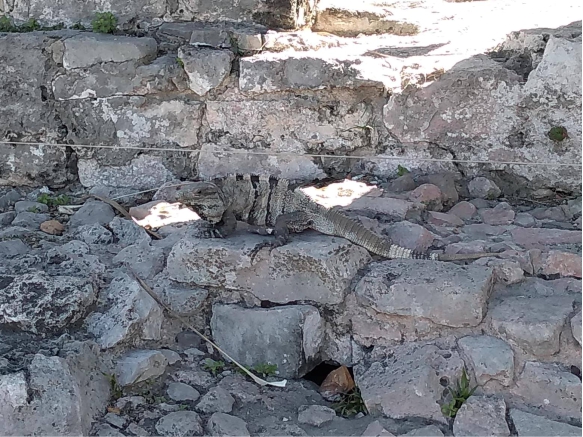
IGUANAS WERE EVERYWHERE IN ALL SIZES
We paused and enjoyed a great buffet lunch that was included in the price before continuing to Coba. The eatery was across the street from the lake. We didn’t see any of the crocodiles that our guide claimed to have seen there. We stayed clear of each other, whether or not this was the case.
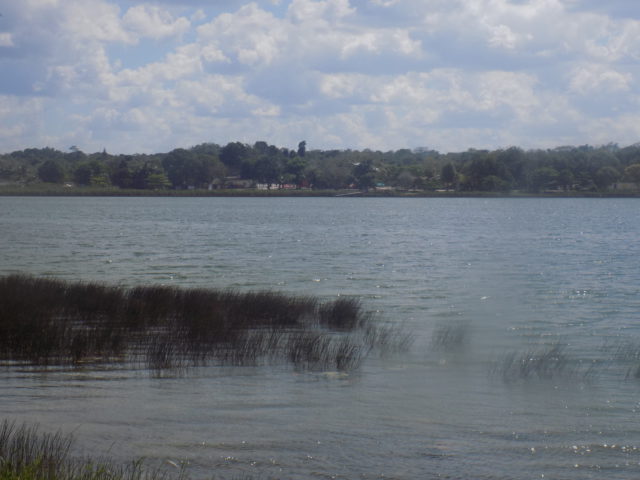
COBA MAYAN RUINS
The name Coba, which translates to “waters stirred by wind,” was our next site, and I must admit that I thought this Mayan ruin to be even more fascinating than the ones in Tulum. Our tour guide advised us to snap pictures of the Observatory, the “Ballgame” court, and the Temple (Nohoch Mul).
The site is around 30 square miles in size, and the ruins are four miles long. It can be explored on foot, although it will take a lot of time. We all used the chauffeured tricycles to move between the buildings (125 pesos roundway for two); otherwise, it would have been a long walk.
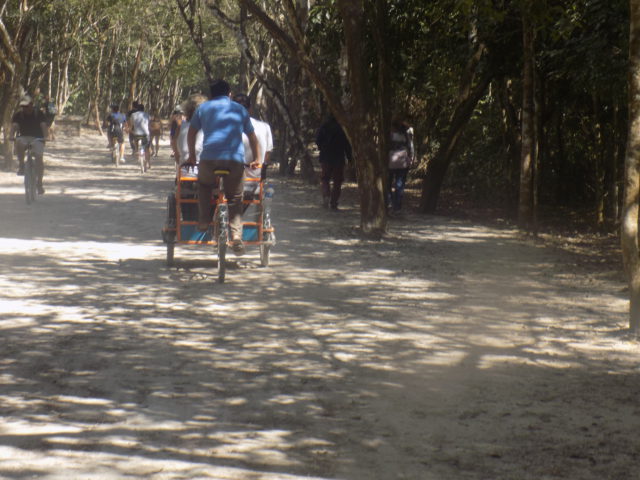
The Mayan city of Coba was designed with several residential neighbourhoods, each of which had about 15 homes grouped and connected by raised walkways (sacbeobs). The majority of it was built between 500 and 900 AD.
At its peak of civilization, Coba is estimated to have had some 50,000 inhabitants; today, there are approximately 1500 inhabitants on the outskirts of Coba.
Nohoch Mul
One of the most important and well-known of the Mayan ruins is the Temple or big pyramid, Nohoch Mul, which is the focal point of the Coba Ruins. Getting to the summit is difficult, but if you do, you will be rewarded with a stunning panorama of the jungle below.
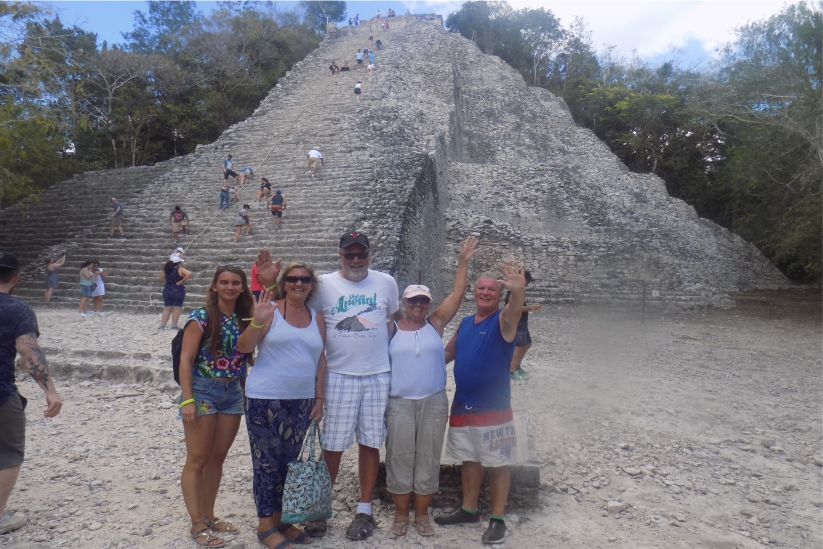
The Great Pyramid of Choula, which is located in Choula, Pueblo, Mexico, is the largest pyramid now known to exist in the world. Nohoch Mul, which means “mound,” is 137 feet tall and the tallest Mayan pyramid in the world.
If this is something you would like to do, you will have to take care as the steps are worn and slippery in places; there is a rope to assist you.
Out of our group, Kathy was the only one who ventured into this climb (and she made it all the way – 120 steps!). My friend and I only went up about 10 steps so we could stop and have our photos taken.
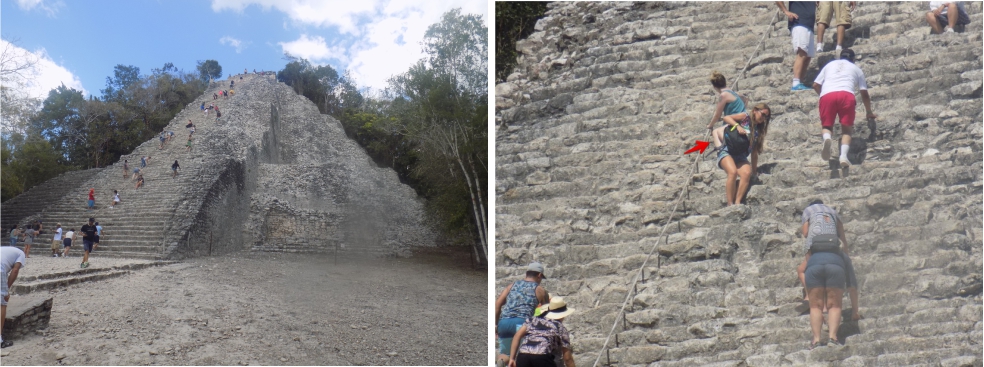
As Kathy climbed to the top, we were all encouraging her and cheering her on. This reminds me of our journey in life, where we are faced with challenges and obstacles. How good it feels when we are fortunate enough to have someone in our corner willing to cheer us on and encourage us to reach our goals. Kathy’s goal was to reach the top and she succeeded. It was another of life’s lessons and came at an unexpected moment.
La Iglesia
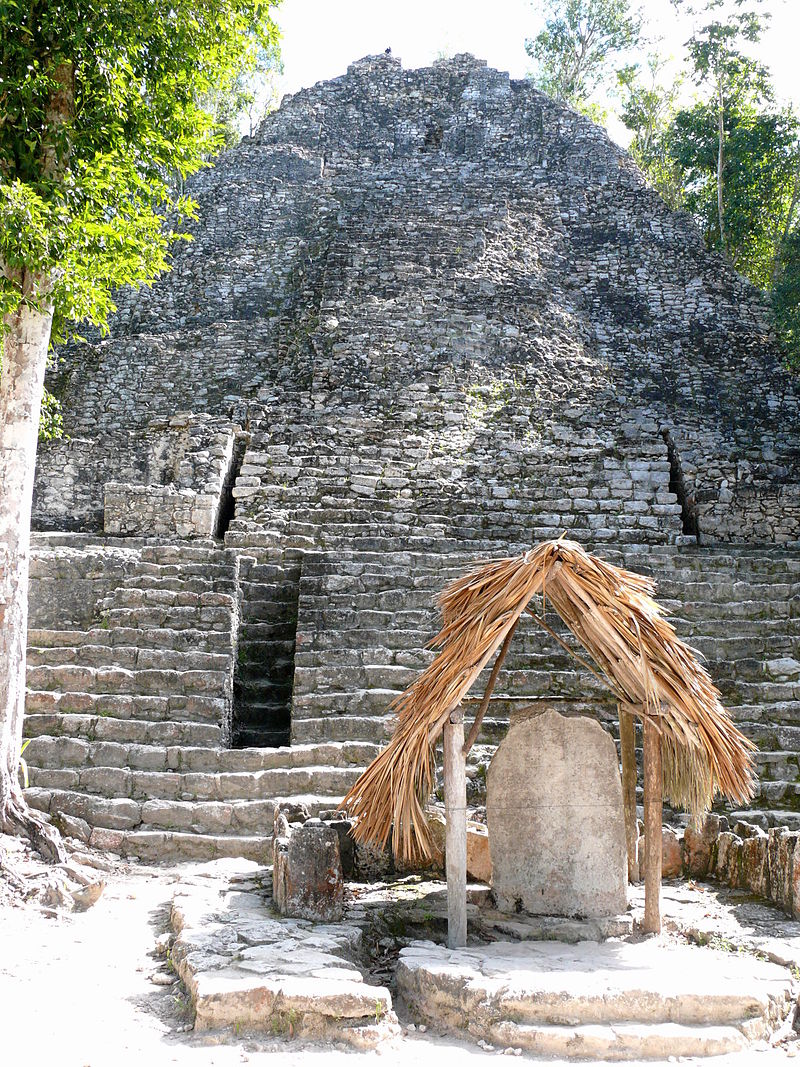
(PHOTO CREDIT: Ken Thomas – KenThomas.us (personal website of the photographer), Public Domain)
La Iglesia church is the second tallest building in Coba, standing at 74 feet. This is where religious ceremonies were held. It is believed that it was built during the Late Classic Period which was 500 to 900 AD.
The Observatory
Although not much is written about the Observatory, it appears this building was to keep track of the movements of the sun, moon and stars as well as synchronize the calendars. It had a circular base instead of a rectangle like the pyramids.
Mayan Ball Courts
Another interesting area is the ball court which was used mostly for ceremonial games. The Coba ball courts have inclined walls. Only certain parts of the body were allowed to be used – hips, shoulders, knees, and elbows but not the feet, hands or head. A heavy ball was used weighing about 6 to 8 pounds and put through a stone hoop or goal, similar to playing basketball.
Our guide told us that the winner was sacrificed and there was “death in winning” but some experts believe that it was the loser instead who was the sacrifice and had his head cut off.
Coba Stelae
An important feature of the Coba Ruins is the engraved and sculpted Stelae – inscriptions and hieroglyphics in limestone used to decipher the ceremonial life and important events of the Mayan culture during the Late Classic Period (AD 500-900). Women are the figures of authority in many of the scenes on the stelae. Unfortunately, natural erosion has rendered them incomprehensible today.
The Cenote
After the Mayan ruins, we went for a refreshing swim in one of the cenotes in Coba. On our way to the Cenote, we passed many stores laden with handcrafted items. If you have a car, it might be fun to check them out.
A cenote is a naturally occurring sinkhole created when limestone bedrock collapses, exposing groundwater below. Cenotes are particularly representative of the Yucatán Peninsula in Mexico and were occasionally used for sacrifices by the pre-Columbian Maya.
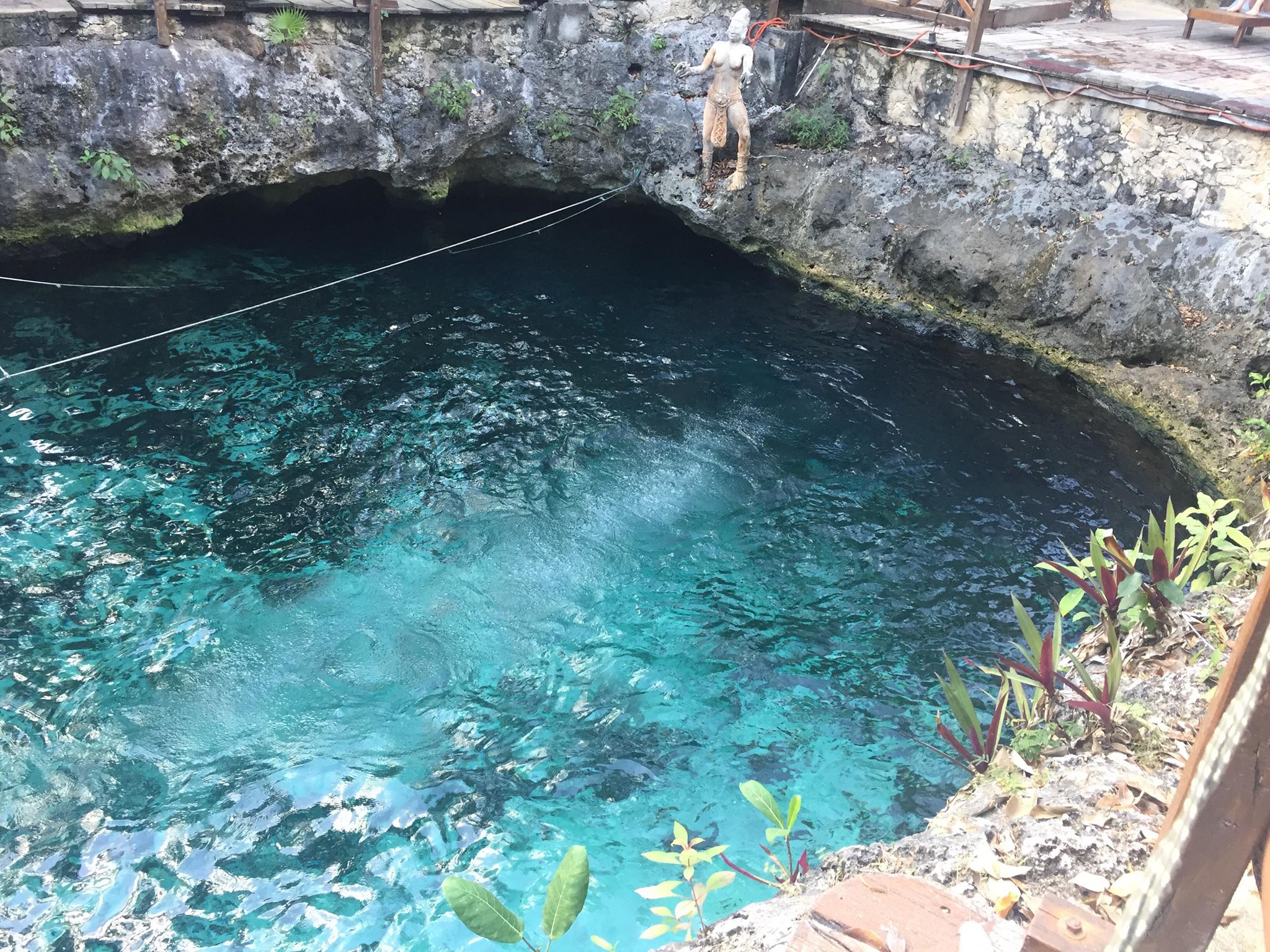
Unfortunately, I didn’t take the opportunity to explore the Cenote (being a non-swimmer has its drawbacks) but look how beautiful the water is!
A Tequila Tasting
The last part of our trip ended up with a tequila tasting in Playa Del Carmen. Although I am not normally a tequila drinker, I have had my fair share here in Mexico. One of my favourites was coffee-based, smooth and creamy.
After spending some time tasting and wandering around looking at the various souvenirs on offer, it was finally time to call it a day and head back to Puerto Morelos.
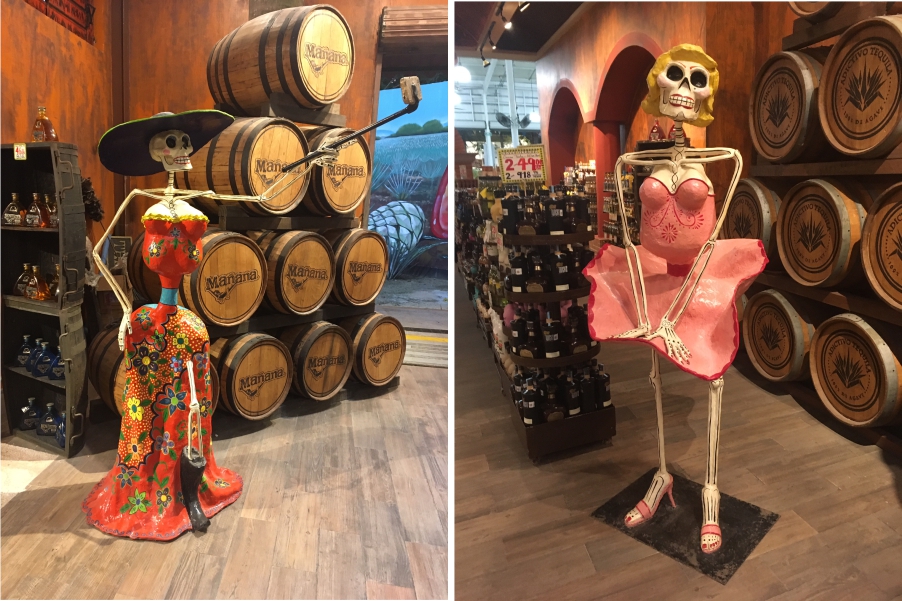
How to Get to Tulum and Coba
Our guide told us the best days to visit the Mayan ruins are a Monday or Tuesday as the crowds would not be as thick. The ruins themselves are about 3 km from the centre of the Town of Tulum.
For us, hiring a tour guide was the easiest way to go. However, there are other options that I will briefly touch on here.
Travelling by Car
There are lots of places to rent a car for the day. Follow the 307 highway from Cancun which will take approximately 1 hour and 45 minutes or from Playa del Carmen which is approximately 45 minutes. Parking costs are inexpensive.
Travelling by Bus
The ADO bus travels from Playa del Carmen to the Mayan ruins and will cost you about 80 pesos which are approximately $4 US and $5.50 Canadian, one way. It will drop you off near the ruins or you can go into town and take a taxi from there. These are big, comfortable, air-conditioned buses.
Travelling by Collectivo
The Collectivo is like a small bus and probably the cheapest way to go. You can ask the driver to drop you off at the ruins on the highway. You will have a little walk ahead of you but for the price of the Collectivo, you can’t beat it.
Travelling by Taxi
You have the option to take a taxi which is a bit more expensive and will cost you approximately 600 pesos ($30 US or $42 Canadian). While most taxis charge the same, there will be the occasional one that charges more – sometimes you can haggle with them, but don’t be unreasonable.
Travelling With a Guide
If you choose to do this, several companies offer this service and the prices vary in what is included and not included in the tours such as Cancun Adventure Tours.
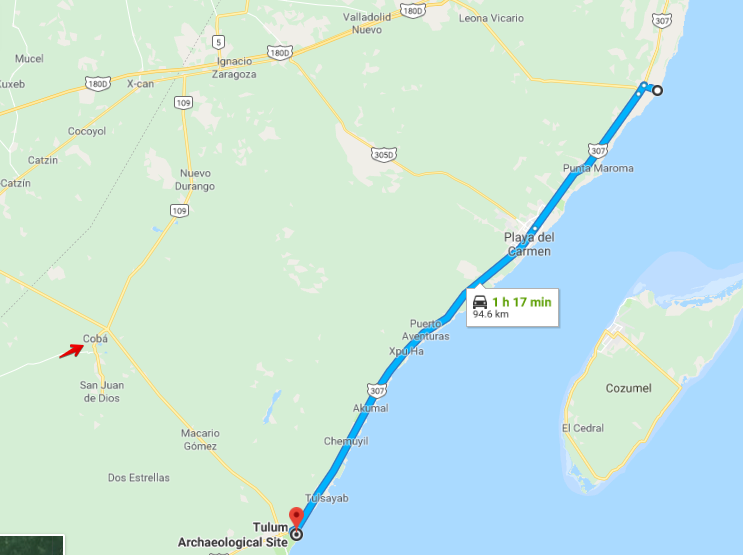
Getting to Coba is easier if you are part of a Tour group (our tour to the Tulum Ruins included the Coba Ruins) or you could drive. It takes about 45 minutes from Tulum.
Final Thoughts
Although not as famous as Chichen Itza, Tulum is one of the best-preserved Mayan sites and is very popular among tourists. They are the third most-visited archaeological site in Mexico after Teotihuacan and Chichen Itza, with over 2.2 million visitors in 2017.
Coba had over 702,749 visitors in 2017. Part of this attraction is Nohoch Mul which can still be climbed today, unlike Chicken Itza.
This was a great way to travel back through time to the 13th and 14th centuries and learn a bit about the Mayan Ruins in Mexico, the people, culture and beliefs. If you decide to visit, I am sure you won’t be disappointed.
Note: If you have the travelling bug but not the dollars and want to see such wonders as the Mayan Ruins in Mexico, then house sitting might be the way to go. My husband and I are house sitters and have house-sat mostly in Canada and Mexico but are thinking about house sitting in other countries.
Two great sites that I use are Trusted House Sitters and House Sit Mexico (be sure and use Coupon Code thetr6210d47b7cc90 for 20% off the membership).
This is a fun way to see places and experience adventures. So far, our Mexico sits include San Miguel de Allende, Ajijic, Chapala, and Puerto Morelos.
Go to our website to read about some of our sits. We love it! Check it out. You might too!!
Have you experienced the Mayan ruins? We would love to hear about your adventures in the comments below.

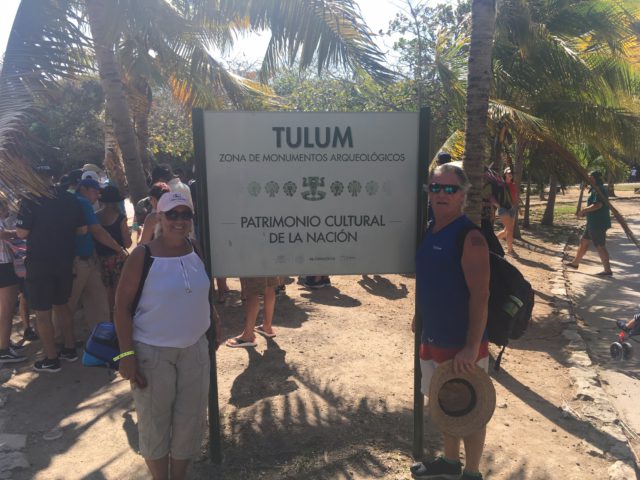
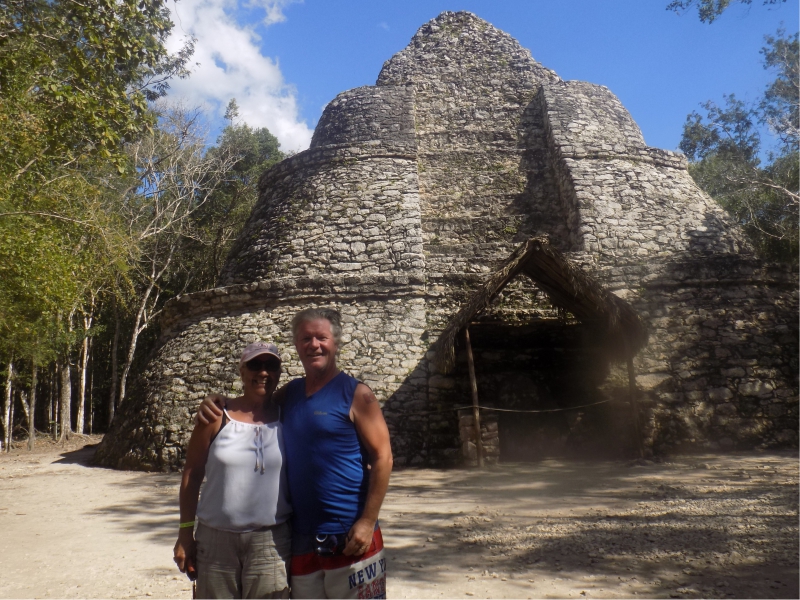

Sounds like you had a fantastic time! I definitely envy you as I have always wanted to check out the Mayan ruins (among other wonders!) so I pretty much devoured your write-up. I can’t say I have ever done anything near this cool but I’d like to! I guess it’s never too late to get started, right?
Cheers!
Trust me Buck, it is NEVER too late to travel. I am in my 60’s and didn’t start travelling untill about 7 years ago. For the last 3 years I have spent two winters in Costa Rica and now this past winter in Mexico. If you had told me 7 years ago I would be doing this, I would have said “no way!”
Hello there,I hope that you are well. I saw your article in the search results that talks about the Mayan Ruins. The heading really captured my interest, however, I was a bit disappointed.
The main reason as to why, is that when I tried to click on the link it told me that Google is trying to find the page. I am sure that the article would have been an interesting read. Could you please check it out, and let me know when it’s up and running as I look forward to reading it.
Regards
Roopesh
Hi there. I am not sure why you were unable to view the article. Other people have commented on it without any issues. I will add the link here – hopefully, it will work for you.
https://thetravellinglife.com/…
Travelling is very good and interesting, most likely the part that you will meet difference people with difference culture and also it’s good to meet friends and relative afar off. Assuming you didn’t travel to Tulum and coba now you wouldn’t have gotten this experience. You are even lucky that the vehicle you entered with other 6people is air-conditioned which make your journey enjoyable. Anyway thanks for the article.
You are welcome Chris. Having an air-conditioned vehicle on such a hot day was indeed welcoming. Tulum and Coba are very interesting ruins and the next time I see them, I would love to rent a car and take my time.